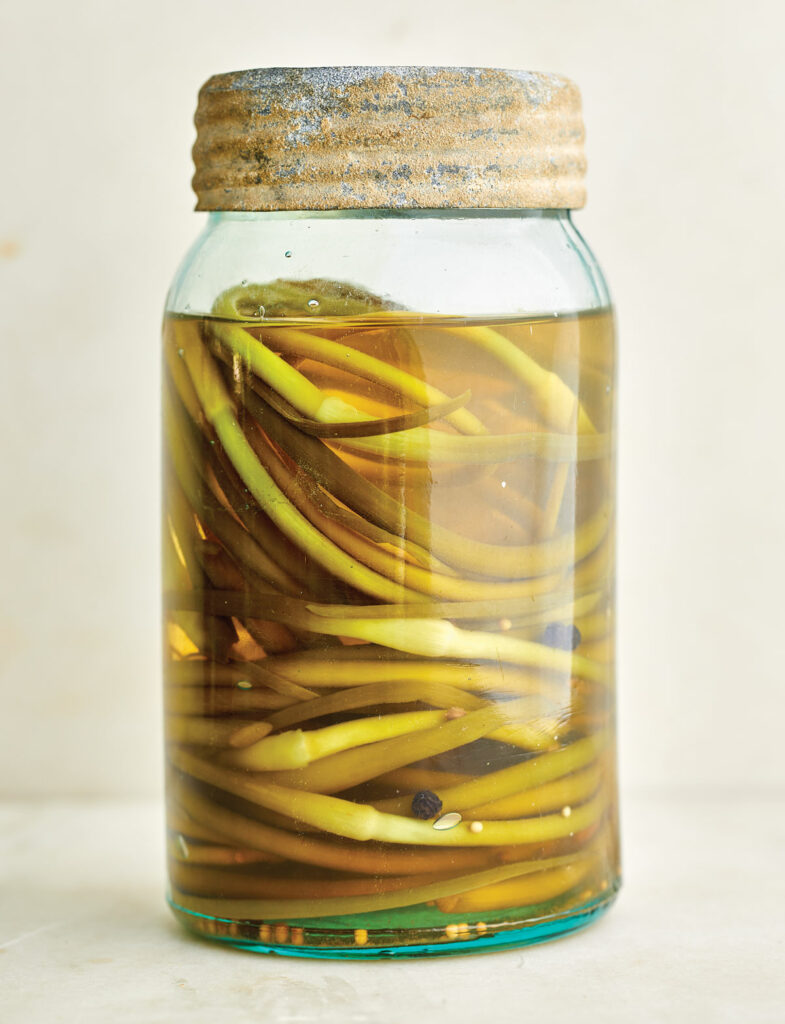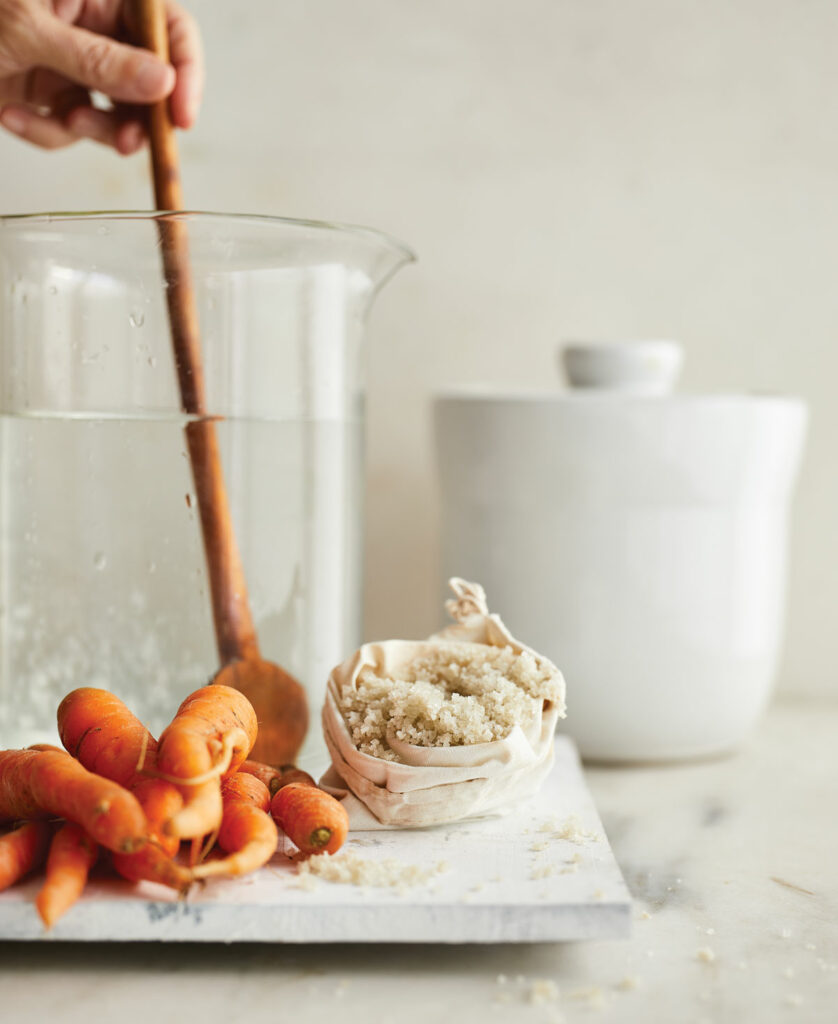Saving the Season with Three Ingredients
KITCHEN GARDEN IS MADE POSSIBLE BY THE GENEROUS AND LOCALLY GROWN SUPPORT OF OUR SPONSOR, MONTEFIORE NYACK HOSPITAL.
There are a million variations and cultural expressions on what and how to ferment, but the basics are salt + foodstuff + time. My own foray into fermenting was primarily about preserving the glut from my East Chatham garden and experiencing fresh flavors even in winter.
FEATURED IMAGE (TOP)
A Laden Larder. My home grown Hudson Valley ferments include sauerkraut, cornichons, coriander and chive buds, garlic scapes, kimchi, and raw vinegars.
Lessons in Fermentation. Failure is a key part of any fermentation laboratory. Once you get the basics down—a decent sauerkraut, a perfect cucumber pickle—then it’s time to play.
Salt Percentage. My own home-base number is 3.5%. Learn how to use a kitchen scale, weigh things in grams (because the math is easier) and use Siri to multiply by 3.5. This formula works perfectly for my fermented pickles, sauerkraut, and most experimentation.
Time. Radishes can ferment for an afternoon or a year. And in the case of miso, many years. A forgotten jar in the back of the root cellar is like uncorking an ancient bottle of wine. Sometimes you sniff and savor a triumph. Sometimes you pitch.
Gear. Ceramic crock + weights, Ball jars, swing-top bottles, E-Jen Kimchi Container, glass pebble weights, kitchen scale, labels and hangtags, fine-point Sharpie, and a few fermentation books.
In-Season-ness. Most rookie mistakes are made with out-of-season, barely fresh produce. Shop the farmers’ market or grow your own for seasonal inspiration.
Follow. David Zilber, Sandor Katz, @ourcookquest, Kirsten Shockey, @kobofermentary, Caroline Smialek, @thefermentationschool, Jori Emde, @fermentsh, Tara Whitsitt, @fermentalista, and the thousands this chain leads you to.


Brined Carrots
Carrots make a satisfying and probiotic fall “pickle” that holds up for many months.
INGREDIENTS
1 small bunch carrots (sliced into spears or coins)
1,000 grams water
35 grams sea salt
DIRECTIONS
Prepare the brine. In a large pitcher, combine the salt and water and stir well to dissolve. You will have more brine than you need. Use the remainder to experiment with another ferment.
Prepare your jar. Tightly pack the carrot slices into a medium jar or crock and pour the brine over them until they are completely covered. Add optional spices if desired: garlic cloves, dill, pickling spices, cayenne, or a classic Indian spice mix are a few ideas.
Add your weight. You’ll need to hold everything below the surface of the brine. In a jar, I do this with glass pebble weights. A ceramic crock often comes with weights for this purpose. Add a loose-fitting lid or plate on top.
Wait. Taste your carrots every few days. In a week they should be ready, but they may take longer to sour in cooler weather. When they are to your liking, place the whole jar in the fridge. They should last a few weeks to many months.



